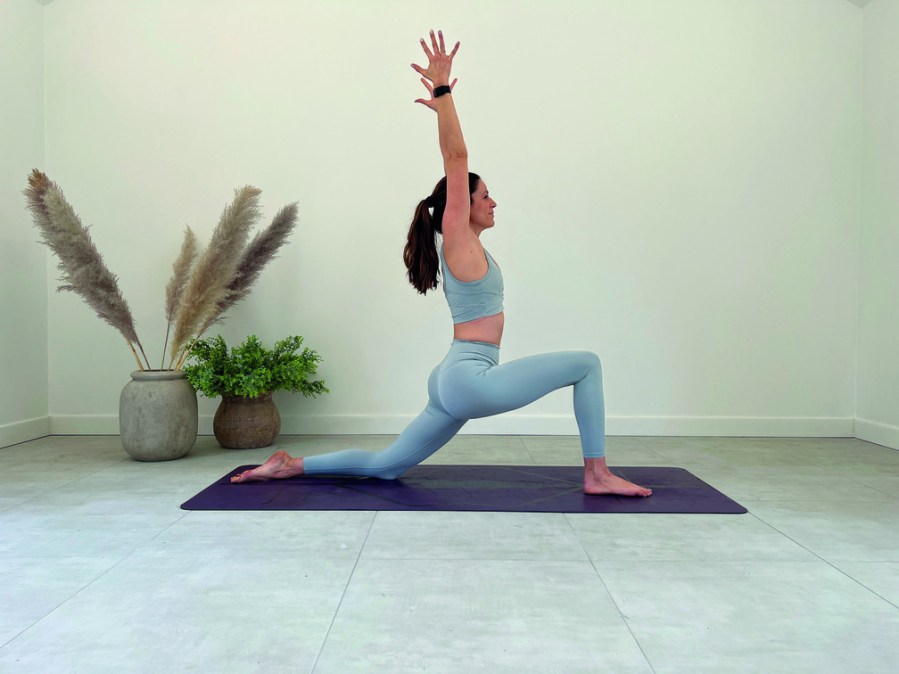Power up your striding skills with this short yoga sequence for runners, from bestselling author and creator of the Yoga Happy app, Hannah Barrett.
Yoga is the perfect cross-training activity for runners. As a runner, you can end up with strong quadriceps, hamstrings and glutes, and yoga helps strengthen the smaller muscles that are perhaps underused, reducing the risk of injury. It will not only make you stronger, but the flexibility you gain in the hip flexors and hamstrings can also help increase your stride length and performance.
Research has shown yoga helps reduce stress and tension, too. This is really useful for runners as unnecessary tension can cause issues like neck and shoulder pain. It also helps improve posture and balance, which will fine-tune your form. At the core of a yoga practice is your breath, and you learn to find a calm breath even in the most dynamic poses. If you can control your breath when you’re running, it can improve your stamina.
Yoga for runners: meditation and sequence
Try this short sequence after each run and you’ll notice the benefits after only three weeks.
Begin with the following breathing meditation, to reduce stress, boost feelings of calm and improve your focus.
- Come into a comfortable seated position with a straight spine, and set a timer for five–20 minutes.
- Gently close your eyes and release any control you have over the breath, simply starting to notice it. Be aware of how each breath is different; how different parts of your body move as you breathe. Notice the slight pause between breaths, any sounds and every sensation that each breath brings.
- Each time your mind starts to wander, gently bring your awareness back to your breath.
- When the timer finishes, take a moment with eyes still closed to sit and notice how you feel, and any thoughts or emotions that arose.
Yoga sequence for runners
- Downward facing dog
- Low lunge
- Pyramid pose
- Warrior III
(Now repeat flow on other side)
- Reclined pigeon
- Reclined twist
Keep reading for full instructions.
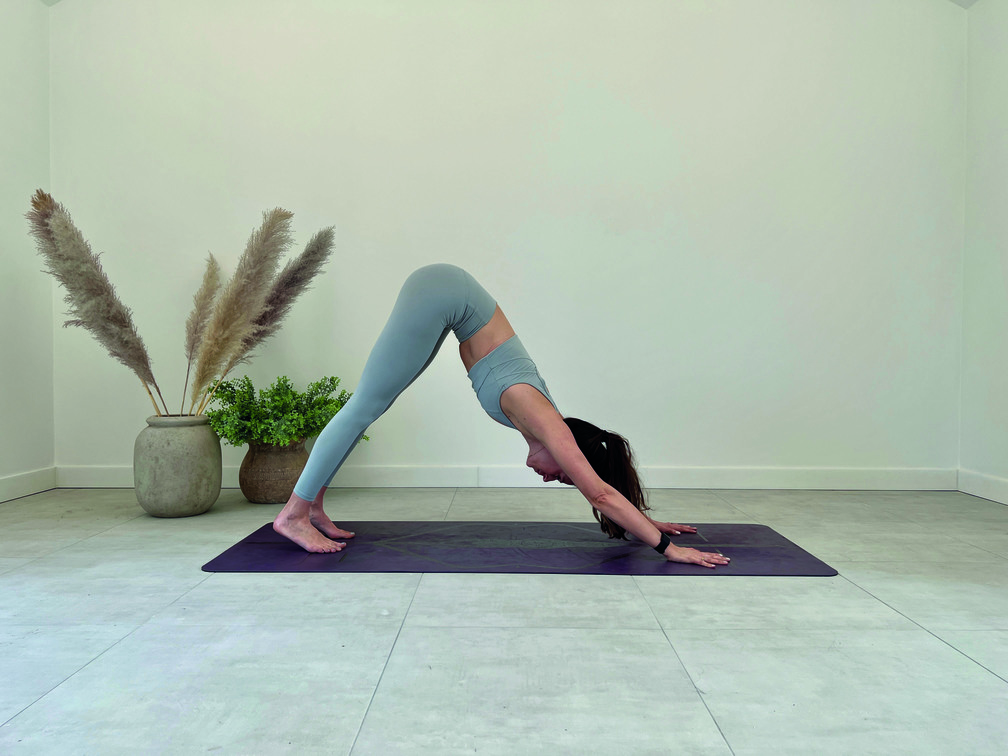
Downward facing dog
Strengthens shoulders, stretches hamstrings and calves
- From all-fours, exhale and curl the toes under. Lift the hips up, reaching the sit bones towards the ceiling and keeping the spine neutral.
- Slowly straighten your legs, avoiding any rounding in your lower back. Draw your heels towards the mat, but don’t worry if they don’t reach – knees can be bent.
- Keep the legs active and dial the hands in opposite directions, finding strength in the arms and shoulders.
- Draw the front ribs in towards the back body and keep the neck long between the arms.
- Hold for five breaths, then exhale and slowly release.
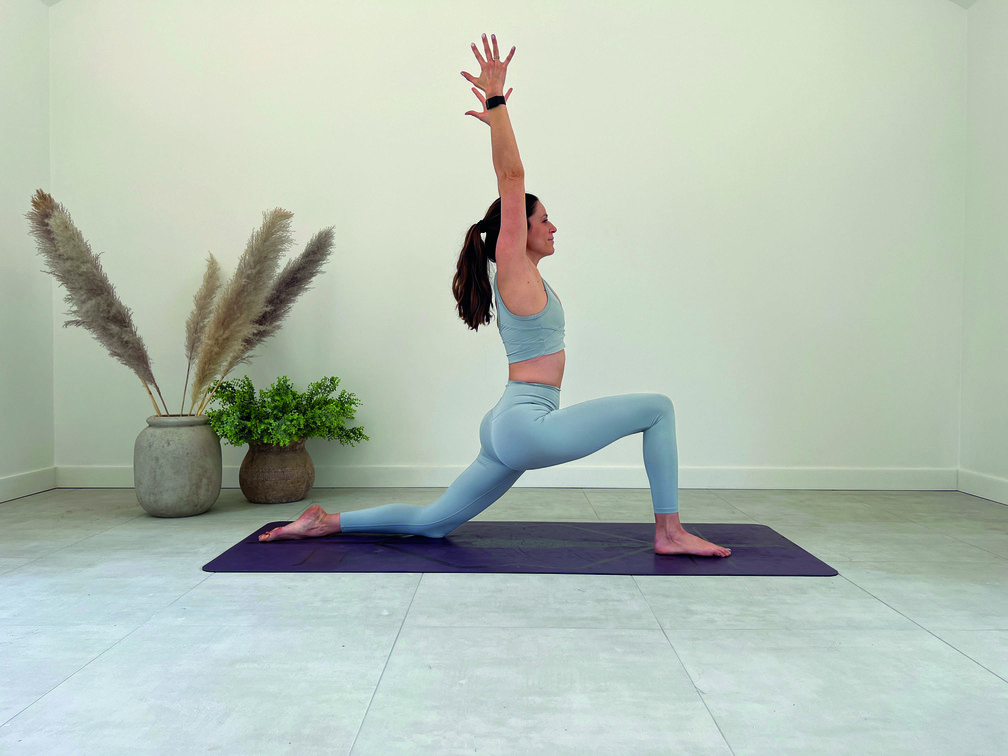
Low lunge
Strengthens the glutes and opens the hips
- From downward facing dog, exhale and step the right foot forward and gently drop the back knee to the mat (you can place a blanket underneath if you have sensitive knees, and the toes can be tucked or untucked).
- Stack your right knee over your right ankle and engage your left glute to help open the front of your hip.
- Inhale and reach your arms overhead, lengthening through your side body, drawing your ribs in to avoid them flaring.
- Hold for five breaths.
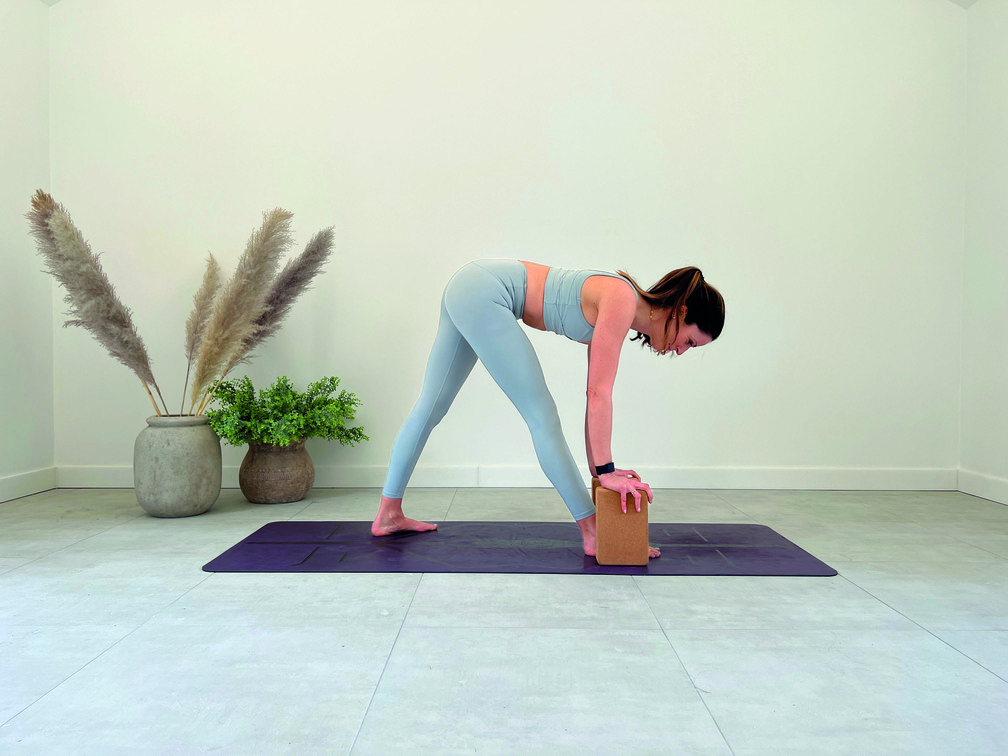
Pyramid pose
Opens the hamstrings
- From low lunge, tuck your back toes under and come up to standing, straightening both legs (the feet are around three-feet apart).
- Ground your back foot and turn your toes out, to around 45-degrees. The feet can widen apart to help you square your hips forward.
- Inhale, standing tall, reaching out through the crown of your head and engaging through your legs. Exhale as you gently hinge forward from the hips, keeping the spine long, chin gently tucked and avoiding rounding your back. Your hands frame the front foot, either on blocks, on fingertips or on the floor.
- Keep your hips square and forward, and your spine long as you hold for five breaths.
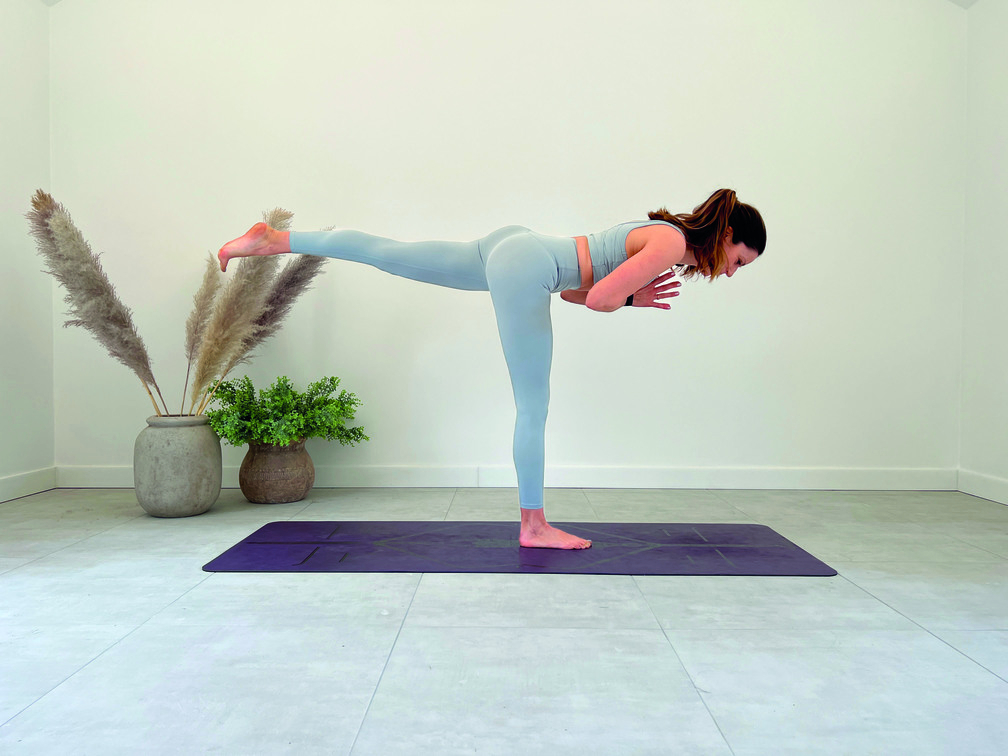
Warrior III
A balancing, core strengthening and active hamstring stretch.
- From pyramid pose, inhale back to a standing position, bringing the hands into a prayer position at the heart.
- Exhale and slowly shift your weight forward, hinging from your hips and bending your right knee as much as needed. Engage the left glute to lift the back leg.
- Push firmly through your grounded foot to activate the stabilising muscles in your hip. Your left hip will want to lift up; try to square it in line with the right.
- Your spine stays long, chin gently tucked, creating a long line from the crown of your head to your left toes.
- Take five breaths. Inhale, lower your leg, frame front foot with hands and step back to downward facing dog.
- Repeat these four moves on the left side.
- Repeat the whole flow on the left side, before moving to the supine (lying) postures.
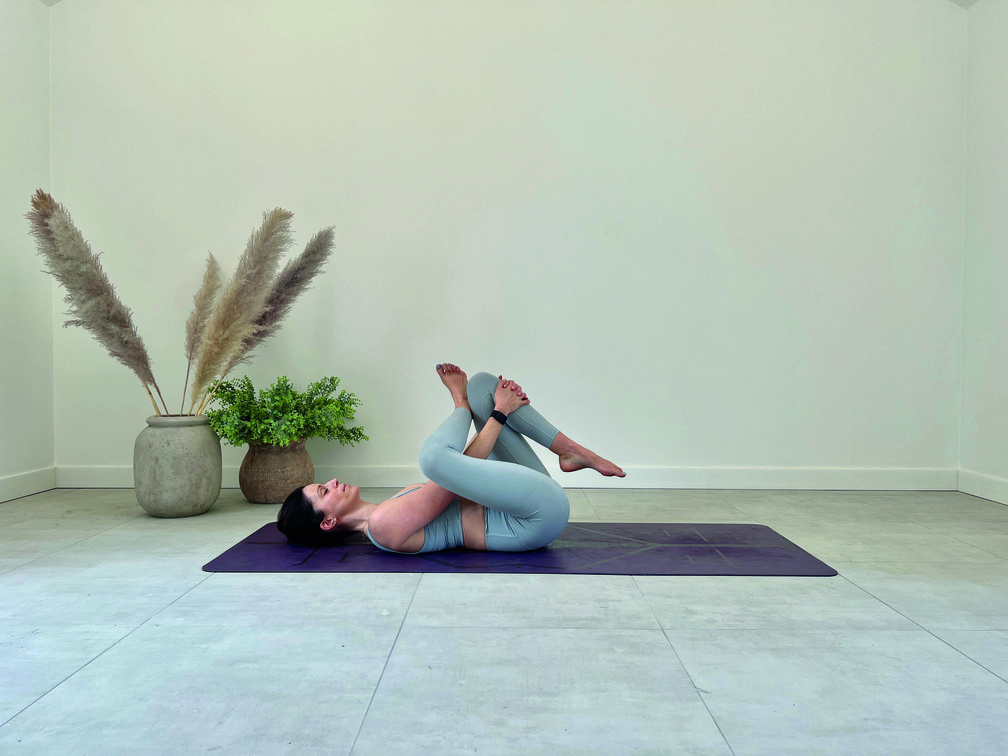
Reclined pigeon
Opens the hips and stretches the glutes
- Coming onto your back, bend your left leg, keeping the foot on the floor.
- Place your right ankle over your left thigh, just below the knee, keeping your right foot flexed.
- Take your hands around the shin or thigh, and reach the right knee away as you gently pull the left leg towards your chest.
- Hold for five slow breaths, then inhale to release. Repeat on the opposite side.
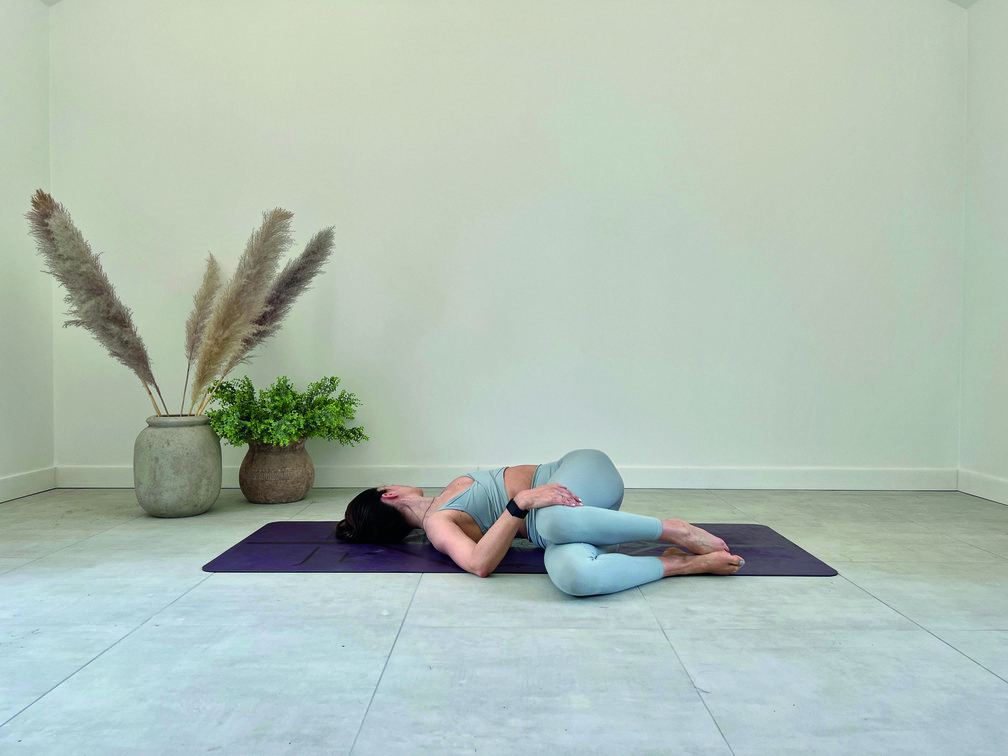
Reclined twist
Releases the hips, relieves tension and provides restoration
- Lying on your back, hug both knees into the chest.
- Exhale and gently drop both knees over to the right as you bring your gaze to the left. You can reach your arms alongside you into a T shape or hold your top thigh.
- Don’t worry if shoulders or knees are grounded, perhaps ground one and work at finding release through the body using your breath.
- Hold for five breaths and then repeat on the left.
Hannah shares a number of yoga flows for runners on her Yoga Happy app, which you can access completely free for a week and unlock more than 300 inspiring yoga, fitness, Pilates, breathwork and meditation classes. Find out more at hannahbarrettyoga.com or on Instagram at @hannahbarrettyoga

